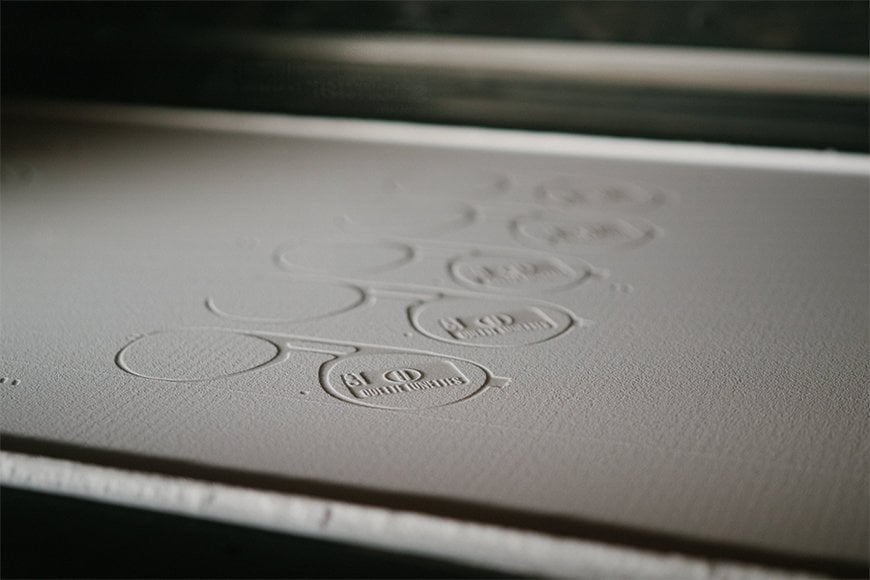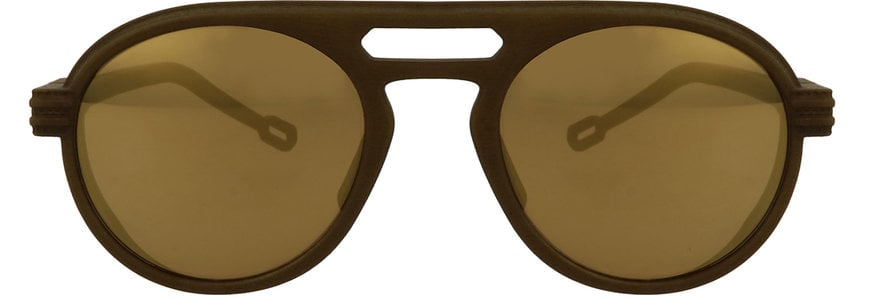www.industryemea.com
04
'22
Written on Modified on
Materialise Advances Sustainable Eyewear with 100% Bio-Based 3D Printing Material
Materialise, a global leader in 3D printing solutions, paves the way towards a sustainable eyewear industry by expanding its range of materials to include Polyamide 11 (PA11). 3D printing addresses fashion industry’s environmental challenge.

The 100% bio-based polymer is made from sustainably farmed castor beans and offers excellent properties for eyewear. By addressing overproduction, the fashion industry’s biggest environmental challenge, 3D printing helps brands meet the expectations of environmentally conscious eyewear consumers.
3D printing, with PA11, is the driving force behind a brand-new collection of sustainable, 3D-printed eyewear by leading Belgian eyewear brand Odette Lunettes. The collection is the result of a unique collaboration that brings together the creative designs of Odette Lunettes, the 3D printing expertise of Materialise and the sporting background of former cycling world champion Tom Boonen.
“3D printing is ideal to create a technical sports frame without compromising on the design we had in mind”, says Eline De Munck, Co-founder of Odette Lunettes. “On top of that you can personalise the design. With our ‘Odette Lunettes X Tom Boonen’ collection, consumers can choose the colour and the size of their frame.”
The design is perfectly suited to sport without compromising on style, offering a unisex frame available in two sizes and three colours. The ability to offer consumers the chance to select their size and colour-way is a key benefit of 3D printing; mass customisation made possible without the costly up-front investment or stock risks.
The glasses are produced in Ultrasint® PA11 by Forward AM, the brand of BASF 3D Printing Solutions. Ultrasint® PA11 is the latest addition to the eyewear materials portfolio at Materialise. The bio-based material is responsibly sourced from castor beans, based on Arkema Rilsan® Polyamide 11. Arkema develops advanced polyamide 11 materials, derived from consciously sourced plants without causing deforestation. The company, along with BASF 3D Printing Solutions, Jayant Agro-Organics and Solidaridad, is a founding member of the Pragati Initiative for sustainable castor bean farming in India, which has trained several thousand farmers on good agricultural and socio-economic practices.
Driving sustainable eyewear manufacturing with 3D printing
With fast fashion based on forecasts and anticipated demand, overproduction has become the fashion industry’s biggest environmental challenge. For eyewear, this leads to 20-30% of unsold stock. 3D printing provides the opportunity to print small product series on-demand and cost-effectively, reducing the risk of overproduction.
The most common manufacturing of eyewear, a subtractive process, uses more material than needed to cut and shape the desired frame. Around 70% of the acetate used in these frames can end up being disposed of. 3D printing, an additive process, enables frames to be ‘built to spec’ with no material loss.
“Eyewear doesn’t just need to look good, it needs to be produced in a way that reflects the brand and the consumer’s sustainability mindfulness”, says Alireza Parandian, Business Development Director at Materialise. “With 3D printing, the waste-minimising nature of the additive process already offers clear environmental and economic benefits. Using a material like PA11 has the potential to magnify these advantages.”
Speed, flexibility and digital-first DNA
3D printing’s ability to ‘do more’ and waste less has fueled its growing popularity in the eyewear sector. It offers virtually unlimited freedom of design, enabling shapes, structures, fit and forms that are physically or financially unviable with traditional manufacturing technologies. Its design and production flexibility make it possible to ideally match each customer’s face and needs, advancing the growing personalisation trend in eyewear.

Digitally fine-tuning designs quickly and accurately without the expenses associated with new iterations allows manufacturers to reduce time between concept and production-ready design from around six months to just one. 3D printing also offers significant cost benefits, helping brands test multiple designs with minimum financial risk and allowing them to validate new designs without undertaking full production runs.
“With its speed, flexibility and digital-first DNA, 3D printing provides radical competitive advantages for eyewear brands”, says Parandian. “It empowers start-ups, supports new business opportunities and allows companies of all sizes to create new designs, test market appetite, and scale-up production with minimum risk. By generating less waste and consuming minimum energy across the supply chain, 3D printing also offers greener credentials, something that increasingly influences today’s consumer choice.”
www.materialise.com

